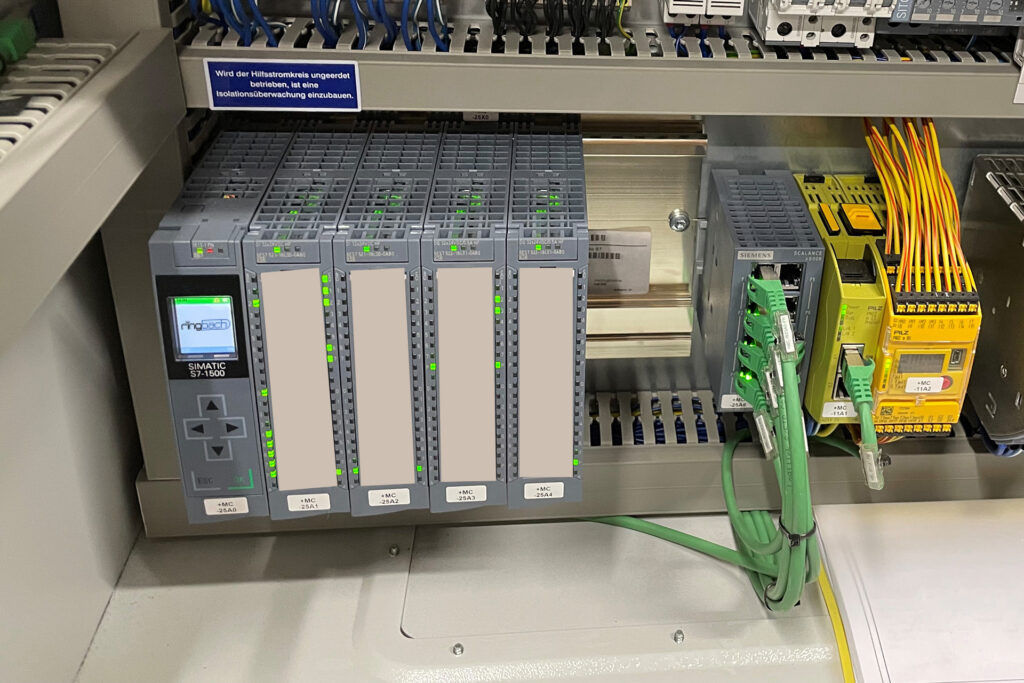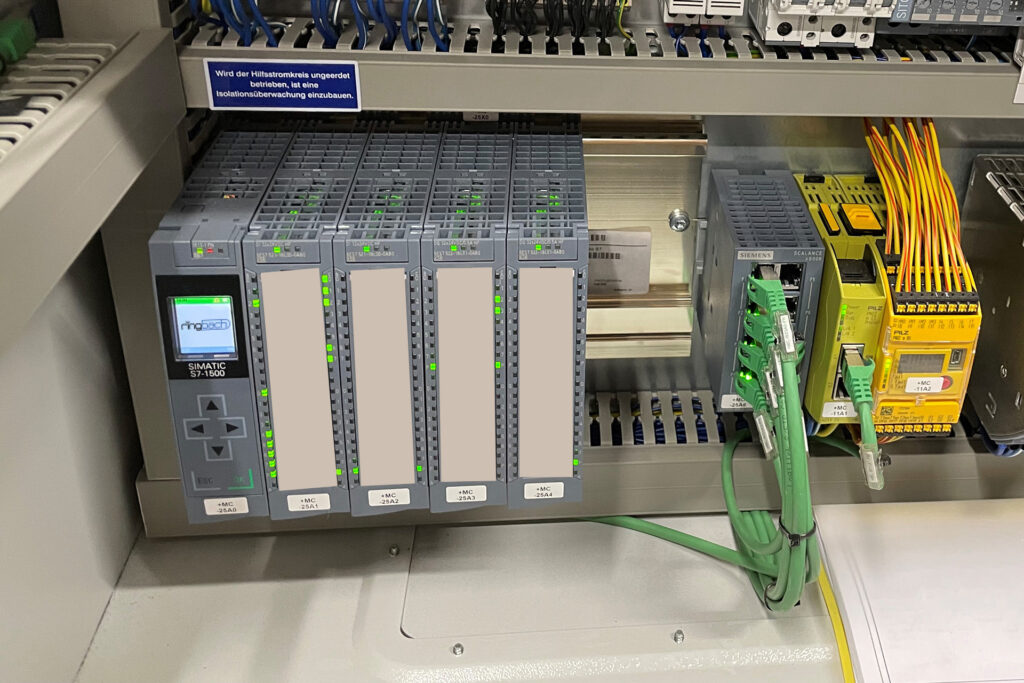
Programmable Logic Controllers (PLC)
- No Comments

In the world of industrial automation, programmable logic controllers (PLCs) play a central role. These powerful devices enable the efficient control and monitoring of complex production processes. In this article, we will delve into the workings of PLCs, discuss their advantages and disadvantages, and explore their applications.
What are programmable logic controllers (PLCs)?
A programmable logic controller is an electronic device used in industrial automation to automatically control processes and operations. Originally developed in the 1960s, PLC systems have become an indispensable part of modern manufacturing and process automation. The core of a PLC consists of a central processing unit (CPU), a memory for programs and data, and input/output modules (I/O modules) that connect to sensors and actuators.
Functionality of programmable logic controllers
The functionality of a programmable logic controller (PLC) is based on a cyclic process known as the scan cycle. This cycle begins with the PLC continuously reading input data from sensors. This input data can include information about temperatures, pressures, positions of machine parts, or other process variables.
After the input data is read, the PLC processes this data according to the stored program. After processing the input data, the PLC controls corresponding output signals to actuators. These actuators can include valves, motors, drives, or display panels. The output signals are activated or deactivated based on the results of processing the input data and the program logic.
PLC programming is done in specialized programming languages such as ladder logic (LAD), function block diagram (FBD), or instruction list (IL). Currently, the Structured Control Language (SCL), also known as structured text (ST), is frequently used. SCL is closest to high-level programming languages like C or C++ and simplifies certain tasks of PLC programming. These languages allow engineers to define logical sequences and control processes. For example, ladder logic uses graphical symbols to represent logical operations such as AND, OR, and NOT.
Creating a PLC program requires an understanding of the process flows and the ability to translate them into logical steps and conditions. The choice of programming language often depends on the application requirements and engineers’ preferences.
Overall, the functionality and programming of PLCs enable precise and reliable control of industrial processes, leading to more efficient production processes and improved product quality.
Advantages and disadvantages of programmable logic controllers
Advantages:
- High flexibility and adaptability through programmability
- Simplified commissioning and maintenance compared to hard-wired controllers
- Ability to quickly adapt and modify production processes
- Integrated protection against overload and malfunctions
- Easy integration into networked automation systems
Disadvantages:
- Vulnerability to cyber threats with insecure networking
- Initial high investment costs for hardware and programming
- Complexity of programming requires specialized expertise
- Limited fault tolerance for hardware failures compared to redundant systems
- Protection against environmental influences
PLCs are typically housed in robust enclosures that protect them from various environmental influences. These enclosures provide protection against dust, moisture, and mechanical stress. In environments with extreme temperatures, special cooled or heated enclosures can be used to ensure optimal PLC function.
Protection against Environmental Influences
PLCs are typically housed in robust enclosures that protect them from various environmental influences. These enclosures provide protection against dust, moisture, and mechanical stress. In environments with extreme temperatures, special cooled or heated enclosures can be used to ensure optimal functioning of the PLC.
Applications of programmable logic controllers
PLCs are used in a variety of application areas:
- Industrial automation:
PLCs are widely used in production lines, manufacturing facilities, robotics, and handling systems. They control and monitor the entire production process to maximize efficiency and quality. - Building automation:
In building technology, PLCs are used to control heating, ventilation, and air conditioning (HVAC) systems, lighting systems, as well as access and security systems. They enable efficient and comfortable building management. - Traffic technology:
PLCs control traffic lights, railway signaling systems, and other traffic facilities to optimize traffic flow and ensure safety in road and rail traffic. - Energy supply:
In the energy industry, PLCs are used to control power grids, energy generation systems, and implement load management systems to optimize energy consumption and ensure network stability.
Future perspectives and developments
The future of PLC technology is promising as it continues to evolve and integrate into the Internet of Things (IoT). Through this integration, PLC systems become smarter, more flexible, and more efficient. The use of Artificial Intelligence (AI) and Machine Learning (ML) enables PLCs to recognize patterns, identify anomalies, and develop adaptive control strategies. This contributes to advancing Industry 4.0 and setting new standards in automation and productivity.
Additionally, edge computing plays a crucial role in the future of PLCs. Edge computing enables fast data processing near the data source, which is critical for real-time control applications. Cybersecurity is also increasingly considered to protect PLCs from cyber attacks.
Furthermore, future PLC systems will be more flexible and modular to quickly adapt to changing production requirements. The integration of sustainability principles and energy efficiency will also play an increasingly important role in optimizing resource utilization and promoting the sustainability of industrial production.
Overall, PLC systems become smarter, more connected, and more efficient through these developments, leading to further optimization of industrial processes and increased utilization of real-time data.
PLCs at ringbach
At ringbach, we also work with programmable logic controllers. We primarily use Structured Control Language (SCL) or function block diagram (FBD) for programming these. If you are interested in integrating a PLC into your manufacturing or production, feel free to contact us anytime >> here <<.
Conclusion
Programmable logic controllers are an essential part of modern industrial automation. Their functionality enables the automation and optimization of complex processes, leading to increased efficiency, quality, and safety in production. With protection against environmental influences and continuous technological advancements, PLC systems will continue to play a key role in the digital transformation of industry.
Sources:


